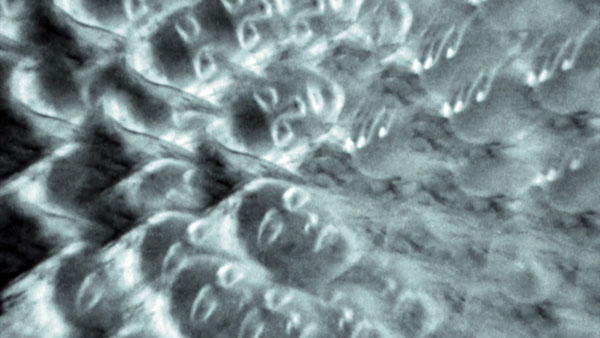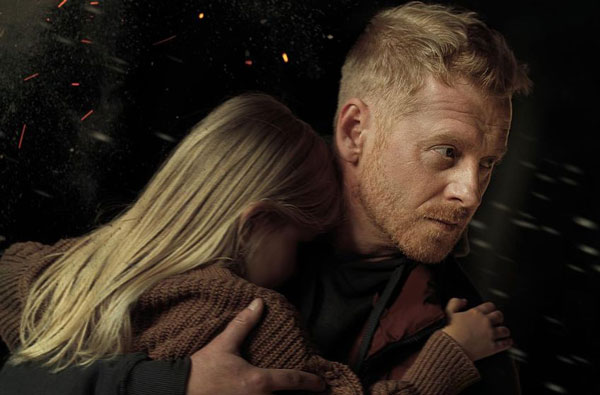By Anita LaBelle
originally published: 09/22/2024

Pizzica, directed by Albert Gabriel Nigrin, transforms a traditional folk dance into a mesmerizing minefield full of trances, traps, temptations, and tunnels.
Falling second in the line-up of Nigrin’s latest trilogy - composed of the films: Dream Screen, Pizzica, and Lamiai - Pizzica incorporates the effervescent quality from the first film while expanding on the experimental techniques that play with the form of the medium of film.
The film gains inspiration from the “pizzica”, a traditional Italian folk dance. Folklore states that if one is bitten by a spider, you must dance the pizzica until the poison is expelled from the body and the victim will fully recover. In this avant-garde adaptation, the film follows a femme fatale “tarantula” of a woman, who lures an unsuspecting woman into her web. Falling prey to the bite, the woman must dance with the spider-like woman, as they twirl between space and time.
The film opens with the sound of waves crashing against the shore, foreshadowing the ending visuals of waves, which not only brings the film full circle but sets up the next film in the trilogy. As the film visually opens, the camera weaves the audience through a tunnel, which is itself made up of weaved flora. This motif of weaving subconsciously enforces the notion that a web is being devised around both the victim of the spider bite, and the viewers themselves. This action of weaving plays a hand in the other spiral motifs and circular motions throughout the film, which are themselves a callback and continuation of the first film in the trilogy, Dream Screen. The combination of the weaving and spiraling, introduces the action of hypnosis that occurs again on both the victim and the viewer. It is this hypnosis that lures us in towards the crux of the web and keeps us watching what happens next.
The circular motions recall the imagery of a dance, with the jingle of a tambourine creating a spellbinding effect in the soundscape of the piece. Additionally, the bee sound featured throughout is reminiscent of the origin of the reason for the “pizzica” dance, while giving a warning as well: the closer we enter into the realm of the film, the greater the risk of a bite, and the necessity to dance and stave off death. Further, the spiral images that recur throughout the film not only hypnotize but speak to the larger confusion of life that takes humanity round and round in an ambiguous manner.
However, it is the fluttering of a bird, and the flapping of its wings that awaken the spider to its presence in the first place. Eventually, as the heroine victim gets wrapped up in the trance of the femme fatale, she becomes cocooned inside the web. As the femme fatale spider captures the bird, now seemingly taking the form of a trapped insect, they both shift into shapes of a similar form - becoming birds of a feather. It is this capture that connects them, starts their dance together, and their joint transformation is what launches their journey undersea, bringing them crashing under the waves that sound at the beginning. This idea of capture again ties back to the original dance’s message of survival, and what it takes to be released from a sort of poisonous prison. The performances of Alexia Fraser and Evie Reese in the film help convey these transformations and mirrorings in an elegant and fascinating way, oftentimes blurring together into shared forms, only to then reemerge as an individual entity.
Pizzica, directed by Albert Gabriel Nigrin, is an interlacing tango through the underbelly of tantalization, delving into the mesh of the mind through an experimental framework. Transformative and tantric, the film will be screening as part of the Nigrin Retrospective, proceeds of which will benefit the New Jersey Media Arts Center.
Pizzica screens at the Fall 2024 New Jersey Film Festival on Friday, September 27. The film will be Online for 24 Hours on this day and In-Person at 7 PM in Voorhees Hall #105/Rutgers University, 71 Hamilton Street, New Brunswick, NJ. Tickets are available for purchase here.









,Tasmania-1976.jpg)
